tributylbismuthane
Modify Date: 2025-08-28 18:20:01

tributylbismuthane structure
|
Common Name | tributylbismuthane | ||
|---|---|---|---|---|
| CAS Number | 3692-81-7 | Molecular Weight | 380.32300 | |
| Density | 1.456 g/mL at 25ºC(lit.) | Boiling Point | 124ºC/7 mmHg(lit.) | |
| Molecular Formula | C12H27Bi | Melting Point | N/A | |
| MSDS | N/A | Flash Point | N/A | |
| Name | tributylbismuthane |
|---|---|
| Synonym | More Synonyms |
| Density | 1.456 g/mL at 25ºC(lit.) |
|---|---|
| Boiling Point | 124ºC/7 mmHg(lit.) |
| Molecular Formula | C12H27Bi |
| Molecular Weight | 380.32300 |
| Exact Mass | 380.19200 |
| LogP | 5.26230 |
| Index of Refraction | n20/D 1.526(lit.) |
Synonym: Section 2 - COMPOSITION, INFORMATION ON INGREDIENTS
Risk Phrases: 17 Section 3 - HAZARDS IDENTIFICATION EMERGENCY OVERVIEW
Spontaneously flammable in air. Potential Health Effects Eye: May cause eye irritation. Skin: May cause skin irritation. May be harmful if absorbed through the skin. Ingestion: May cause irritation of the digestive tract. May be harmful if swallowed. Inhalation: May cause respiratory tract irritation. May be harmful if inhaled. Chronic: Not available. Section 4 - FIRST AID MEASURES Eyes: Flush eyes with plenty of water for at least 15 minutes, occasionally lifting the upper and lower eyelids. Get medical aid. Skin: Get medical aid. Flush skin with plenty of water for at least 15 minutes while removing contaminated clothing and shoes. Ingestion: Get medical aid. Wash mouth out with water. Inhalation: Remove from exposure and move to fresh air immediately. If not breathing, give artificial respiration. If breathing is difficult, give oxygen. Get medical aid. Notes to Physician: Treat symptomatically and supportively. Section 5 - FIRE FIGHTING MEASURES General Information: As in any fire, wear a self-contained breathing apparatus in pressure-demand, MSHA/NIOSH (approved or equivalent), and full protective gear. Material can spontaneously ignite (pyrophoric) when exposed to air at normal or slightly elevated temperatures. Will burn if involved in a fire. Flammable liquid and vapor. Extinguishing Media: Use water spray, dry chemical, carbon dioxide, or chemical foam. Section 6 - ACCIDENTAL RELEASE MEASURES General Information: Use proper personal protective equipment as indicated in Section 8. Spills/Leaks: Absorb spill with inert material (e.g. vermiculite, sand or earth), then place in suitable container. Remove all sources of ignition. Use a spark-proof tool. Section 7 - HANDLING and STORAGE Handling: Use spark-proof tools and explosion proof equipment. Avoid breathing dust, vapor, mist, or gas. Avoid contact with skin and eyes. Use only in a chemical fume hood. Storage: Keep away from sources of ignition. Store in a cool, dry place. Store in a tightly closed container. Flammables-area. Section 8 - EXPOSURE CONTROLS, PERSONAL PROTECTION Engineering Controls: Facilities storing or utilizing this material should be equipped with an eyewash facility and a safety shower. Use adequate ventilation to keep airborne concentrations low. Exposure Limits CAS# 3692-81-7: Personal Protective Equipment Eyes: Not available. Skin: Wear appropriate protective gloves to prevent skin exposure. Clothing: Wear appropriate protective clothing to prevent skin exposure. Respirators: Follow the OSHA respirator regulations found in 29 CFR 1910.134 or European Standard EN 149. Use a NIOSH/MSHA or European Standard EN 149 approved respirator if exposure limits are exceeded or if irritation or other symptoms are experienced. Section 9 - PHYSICAL AND CHEMICAL PROPERTIES Physical State: Solid Color: Not available. Odor: Not available. pH: Not available. Vapor Pressure: Not available. Viscosity: Not available. Boiling Point: 124 deg C @ 7 mmHg Freezing/Melting Point: Not available. Autoignition Temperature: Not available. Flash Point: Not available. Explosion Limits, lower: Not available. Explosion Limits, upper: Not available. Decomposition Temperature: Solubility in water: Specific Gravity/Density: 1.456 Molecular Formula: C12H27Bi Molecular Weight: 380.33 Section 10 - STABILITY AND REACTIVITY Chemical Stability: Not available. Conditions to Avoid: Incompatible materials, ignition sources, exposure to air. Incompatibilities with Other Materials: Strong oxidizing agents. Hazardous Decomposition Products: Carbon monoxide, carbon dioxide. Hazardous Polymerization: Has not been reported Section 11 - TOXICOLOGICAL INFORMATION RTECS#: CAS# 3692-81-7 unlisted. LD50/LC50: Not available. Carcinogenicity: Tributylbismuthine - Not listed by ACGIH, IARC, or NTP. Section 12 - ECOLOGICAL INFORMATION Section 13 - DISPOSAL CONSIDERATIONS Dispose of in a manner consistent with federal, state, and local regulations. Section 14 - TRANSPORT INFORMATION IATA No information available. IMO No information available. RID/ADR No information available. Section 15 - REGULATORY INFORMATION European/International Regulations European Labeling in Accordance with EC Directives Hazard Symbols: F Risk Phrases: R 17 Spontaneously flammable in air. Safety Phrases: WGK (Water Danger/Protection) CAS# 3692-81-7: No information available. Canada None of the chemicals in this product are listed on the DSL/NDSL list. CAS# 3692-81-7 is not listed on Canada's Ingredient Disclosure List. US FEDERAL TSCA CAS# 3692-81-7 is not listed on the TSCA inventory. It is for research and development use only. SECTION 16 - ADDITIONAL INFORMATION N/A |
| Hazard Codes | F: Flammable; |
|---|---|
| Risk Phrases | 17 |
| Safety Phrases | 16-27-36/37/39 |
| RIDADR | UN 3394 4.2/PG 1 |
| HS Code | 2931900090 |
| Precursor 9 | |
|---|---|
| DownStream 7 | |
| HS Code | 2931900090 |
|---|---|
| Summary | 2931900090. other organo-inorganic compounds. VAT:17.0%. Tax rebate rate:13.0%. Supervision conditions:AB(certificate of inspection for goods inward,certificate of inspection for goods outward). MFN tariff:6.5%. General tariff:30.0% |
| Tributylbismuth |
| Tributyl-bismutin |
| Tributylbismuthine |
| Bismuthine,tributyl |
| Tributylwismut |
| tri-n-butylbismuth |
 CAS#:693-04-9
CAS#:693-04-9 CAS#:7787-60-2
CAS#:7787-60-2 CAS#:5142-75-6
CAS#:5142-75-6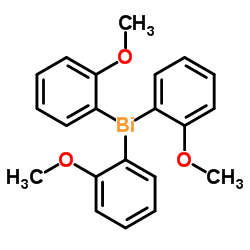 CAS#:83724-41-8
CAS#:83724-41-8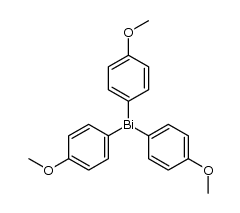 CAS#:33397-21-6
CAS#:33397-21-6 CAS#:3525-44-8
CAS#:3525-44-8 CAS#:109-72-8
CAS#:109-72-8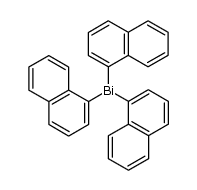 CAS#:33397-22-7
CAS#:33397-22-7 CAS#:5575-51-9
CAS#:5575-51-9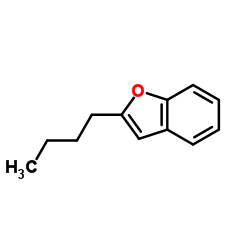 CAS#:4265-27-4
CAS#:4265-27-4 CAS#:109-69-3
CAS#:109-69-3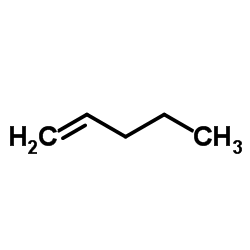 CAS#:109-67-1
CAS#:109-67-1 CAS#:10405-85-3
CAS#:10405-85-3 CAS#:66213-70-5
CAS#:66213-70-5 CAS#:106-97-8
CAS#:106-97-8 CAS#:106-98-9
CAS#:106-98-9